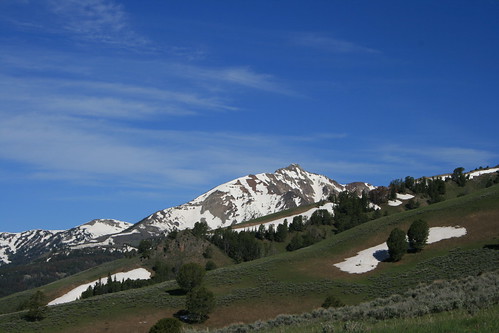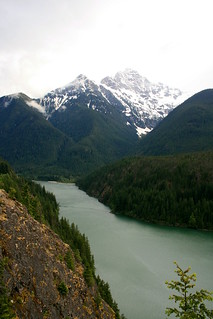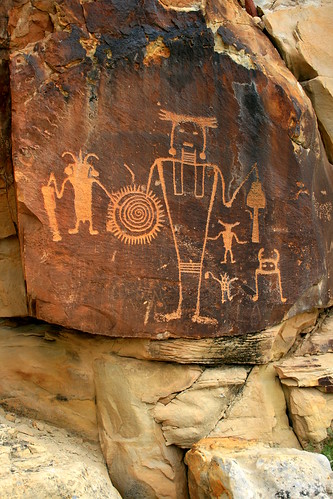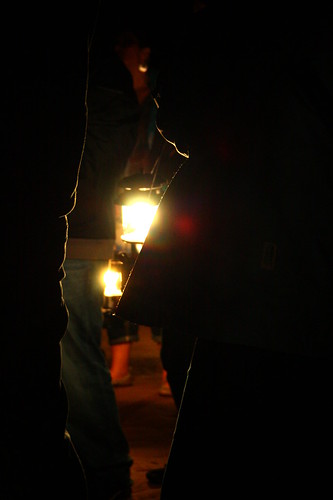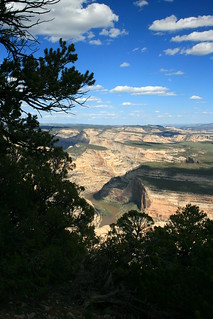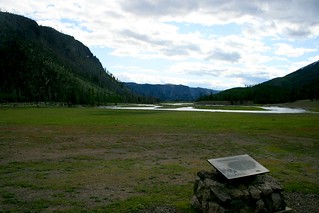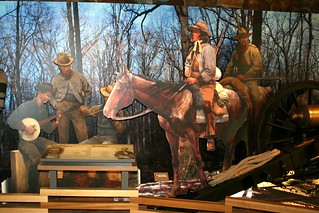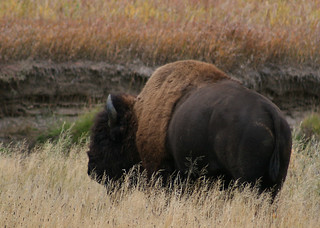“I’m just trying to find a simple melody,
A song that I can sing in my own company.”
Research Interests
My research interests have changed quite a bit over the years. A common theme is the problem of boundaries, such as intellectual boundaries (sociology of science), international boundaries (international political economy), and transboundary cooperation on natural resources issues.
My current book-length examines the politics behind the ways that US national parks interpret Western expansion. Past major projects have looked at the role of hegemony in the international political economy, the domestic political economy of trade cooperation, and transdisciplinary research in the social sciences; I’ve also written on some miscellaneous topics.
One major project on the backburner examines the interaction between national-level political coalitions and European-level politics, using Euroskeptic parties as an analytical lever. It has three polished chapters and a published book chapter (“Political Economy of European Integration”).
Another backburner project examines transboundary cooperation on wildlife management around the national parks. It has several published papers, all of which draw from an unpublished formal model. I’m still ironing out some wrinkles in the model, but the non-formal presentation in the papers (see below) reflects robust results from the model. I am focusing on a group of study areas, in roughly descending order of completeness: the Greater Yellowstone Area, the Olympic Peninsula, Glacier-Waterton (Crown of the Continent), Alaskan caribou, and the Black Hills.
The project on national park interpretation looks at how local political environments, material features of sites, disciplinary interests, and agency interests bias the stories the parks tell. Email me if you’re interested in seeing some manuscripts. Political scientists can best make sense of the project by thinking in terms of the political economy of culture. It also engages with some folks in history, anthropology, and landscape architecture. The National Park Service is a government agency that disseminates cultural products to 300 million visitors a year, but its production is almost completely unstudied. Until now.
You can find references and some full texts on ResearchGate. Citations are in my Google Scholar profile.
I make an effort to disseminate my national park work to non-academic audiences of various kinds. That’s led to publishing some travel articles and some photography. Check out my Flickr page if you’re interested in the photos.
If you’re just looking for the CV, click here. To make sense of it, this page organizes selected publications by topic. I’ve mixed my public engagement publications with the scholarly ones here; if you want them sorted them by peer-review, download the CV.
Publications by topic
Transboundary cooperation, environmental policy
“What Makes it Wild? Visitors’ Constructions of Wildlife and Wilderness in the Greater Yellowstone Area,” International Journal of Wilderness 19(3): 25-31, December, 2013, with Carie Steele. Link to issue.
“Showdown at Yellowstone: The Victims and Survivors of Ecosystem Management,” Journal of the West 50(1): 66-73, Winter 2011. PDF here.
“Fifty Years Of The Greater Yellowstone Coordinating Committee,” National Parks Traveler, 20 April 2015.
“Theoretical Concerns in Networks of Protected Areas: Symmetry and Asymmetry” in Proceedings of the 2011 George Wright Society Conference on Parks, Protected Areas, and Cultural Sites, edited by Samantha Weber. Hancock, Michigan: The George Wright Society, pp. 260-64. PDF here.
“Political Opposition to Transboundary Cooperation in the Greater Yellowstone Area,” Journal of Tourism and Leisure Studies 17(2), August 2011.
“Game-Theoretic Insights into Effective Cooperation Among National Parks and Indian Tribes,” in Protected Areas in a Changing World: Proceedings of the 2009 George Wright Society Conference on Parks, Protected Areas, and Cultural Sites, edited by Samantha Weber. Hancock, Michigan: The George Wright Society 2010, pp. 67-72. Book available here. PDF here.
“International Cooperation as Interagency Cooperation: Examples from Wildlife and Habitat Preservation,” Perspectives on Politics 7(4): 883-899, December 2009. Abstract and Cambridge link here.
“Privatizing Isle Royale? The Limits of Free Market Environmentalism,” George Wright Forum 25(3): 23-39, March 2009. PDF here.
“Should the Free-Market Manage Public Parks?” in Change and the Heartland 1: 12-13, Environmental Change Institute, University of Illinois, June 2010.
“The Politics of Mammoth Cave National Park,” Political Science Alumni Newsletter, Spring 2010, http://www.pol.illinois.edu/alumni/newsletter/10_sp_pahremncp.html.
“The Politics of Wildlife and Wilderness in the Greater Yellowstone Area,” Political Science Alumni Newsletter, http://www.pol.illinois.edu/alumni/newsletter/09_su_index.html, Summer 2009.
“Ecosystem Management,” Encyclopedia of Politics in the American West, edited by Steven L. Danver, Mesa Verde Publishing/CQ Press, 2013, pp. 300-301.
“Green River,” Encyclopedia of Politics in the American West, edited by Steven L. Danver, Mesa Verde Publishing/CQ Press, 2013, pp. 364-366.
“National Park Service,” Encyclopedia of Politics in the American West, edited by Steven L. Danver, Mesa Verde Publishing/CQ Press, 2013, pp. 488-490.
National park interpretation, political economy of culture
“Reimagining the National Park System,” The Blue Review, September 12, 2017.
“Native-American Meta-Interpretation,” Legacy, September/October 2015, pp. 25-27, with Audrey Neville.
“Abraham Lincoln: Park Interpreter,” Legacy, July/August 2015, pp. 36-37.
“Material Falsehoods: Living a Lie at This Old Fort,” Encounters with Popular Pasts: Cultural Heritage and Popular Culture, edited by Mike Robinson and Helaine Silverman, Springer, 2015, Chapter 4, pp. 61-80..
“Study on How Tourists Use Social Media in Wilderness,” International Journal of Wilderness 20(3): 36, 38 (December, 2014), with Audrey Neville, with photograph.
“Telling Stories of Nature and Humans in Midwest National Parks,” in Proceedings of the 2013 George Wright Society Conference on Parks, Protected Areas, and Cultural Sites, edited by Samantha Weber. Hancock, Michigan: The George Wright Society, 2014, pp. 121-126.
“Reconsidering National Park Interpretation on the Great Plains and Trans-Mississippi West,” Great Plains Research, 22 (2): 99–122, Fall 2012 (lead article).
“Wake, Nicodemus!” National Parks Traveler, April 8, 2013.
“How the Cherokee Fought the Civil War,” Indian Country Today, 28 March 2012, pp. 34-37
National Park Interpretation in the West, editor of special issue of The Journal of the West, Summer 2011. With two contributions of my own:
“Patterns of National Park Interpretation in the West,” Journal of the West 50(3): 7-13, Summer 2011. [This one previews the themes of my book manuscript.]
“Telling Yellowstone’s Stories,” Journal of the West, 50(3): 31-42, Summer 2011.
“Fort Davis National Historic Site: An Indian Fort Without Indians,” Studies in Symbolic Interaction 37: 3-27, 2011. PDF here.
“No Longer Circling the Wagons: Many National Parks Get Indian Stories Wrong,” Indian Country Today, 7 September 2001, pp. 20-25; reprinted online 29 August 2011,
“Culture and Power – wo bleibt die Ökonomie?” Erwägen – Wissen – Ethik 17(1): 34-37, April 2006, with Gerhard Fink. PDF here.
Other national parks issues
Behind the Scenes, Illinois News Bureau, three blog posts
“Between wilderness, tourism and civilization,” July 18, 2016.
“A night in grizzly country,” July 21, 2016.
“Tourist behaving badly,” July 25, 2016.
“What’s Most Important for the Future of Our National Parks?” Interviewed by Craig Chamberlain for the “A Minute With” feature on Illinois home page, June 8, 2016.
Review of Stan Stevens, editor, Indigenous Peoples, National Parks, and Protected Areas: A New Paradigm Linking Conservation, Culture, and Rights, in Native American and Indigenous Studies, 2015.
Two-level games
Democratic Foreign Policy Making: Problems of Divided Government and International Cooperation, editor, Palgrave, 2006. Amazon link here. With three chapters from me:
“Divided Government and International Cooperation: An Overview,” pp. 1-20.
“Divided Government and International Cooperation in the Nineteenth Century,” pp. 107-132.
“Conclusion: Democracy and Foreign Policy,” pp. 175-200.
“Patently Misleading: Partial Implementation and Bargaining Leverage in Sino-American Negotiations on Intellectual Property Rights,” International Organization, 59(3): 695-730, Summer 2005, with Andrew Mertha.
“House Rules: Institutional Choice and United States Trade Negotiations,” Conflict Management and Peace Sciences 21(3): 195-213, Fall 2004. PDF here.
“Most-Favored-Nation Clauses, Domestic Politics, and Clustered Negotiations,” International Organization 55(4): 861-892, Summer 2001.
Reprinted in Rational Design: Explaining the Design of International Institutions, edited by Barbara Koremenos, Charles Lipson, and Duncan Snidal, Cambridge University Press, 2004.
“Comment: Labor Standards, Trade Sanctions and the Hijacking Hypothesis,” Constituent Interests and U.S. Trade Policies, edited by Alan V. Deardorff and Robert Stern, University of Michigan Press, 1998, pp. 255-262.
“Endogenous Domestic Institutions in Two-Level Games: Parliamentary Oversight in Denmark and Elsewhere,” Journal of Conflict Resolution 41(1):147-174, February 1997.
New Games: Using Game Theory to Link and International and Domestic Politics, special issue of the Journal of Conflict Resolution, 1997, co-edited with Paul Papayoanou.
Domestic political economy of trade
“Commentary: International Political Economy and the Great Recession: Introduction,” International Interactions 35(1): 1-2.
Politics and Trade Cooperation in the Nineteenth Century: The “Agreeable Customs” of 1815-1914, Cambridge University Press, 2007. Amazon page here.
International Trade and Political Institutions: Instituting Trade in the Long Nineteenth Century, co-edited with Fiona McGillivray, Iain McLean, and Cheryl Schonhardt-Bailey, Edward Elgar Publishing, 2001. Amazon link here. With two chapters authored or coauthored:
“Tariffs and Modern Political Institutions: An Introduction,” with McGillivray, McLean, and Schonhardt-Bailey.
“Agreeable Duties: The Tariff Treaty Regime in the Nineteenth Century”
“Reactions and Reciprocity: Tariffs and Trade Liberalization in 1815-1914,” Journal of Conflict Resolution 42(4): 467-492, August 1998.
European Union
“Party On! Political Parties in European Foreign Economic Policies,” Seton Hall Journal of Diplomacy and International Relations 15(11): 35-47 (Spring/Summer 2014), with Kostas Kourtikakis, available by request.
“The Myths of Turkish Influence in the European Union,” Journal of Common Market Studies 47(2): 357–384, February 2009, with Burcu Uçaray-Mangıtlı. PDF here.
“The Political Economy of European Integration in a Spatial Model,” in The Political Economy of European Integration, edited by Erik Jones and Amy Verdun, Routledge, 2004, pp. 179-190. PDF here.
“Divided Government and International Cooperation in Austria-Hungary, Sweden-Norway, and the European Union,” European Union Politics 2(2): 131-162, Spring 2001.
“Wider and Deeper: The Links between Expansion and Enlargement in the European Communities,” Chapter 6 in Towards a New Europe: Stops and Starts in Regional Integration, edited by Gerald Schneider, Patricia A. Weitsman, and Thomas Bernauer. Praeger/Greenwood, 1995, pp. 111-136. PDF here.
“The European Constitution: Gambling for Small Stakes?” The Illinois International Review, 2: 6-7, Spring 2006.
Hegemony and international political economy
“Hegemony and the International Economy,” Comparative Sociology 4(3-4): 451-477, December 2005.
Leading Questions: How Hegemony Affects the International Political Economy, University of Michigan Press, 1999. Amazon link here.
“Multilateral Cooperation in an Iterated Prisoners’ Dilemma,” Journal of Conflict Resolution 38(2): 326-352, June 1994.
“British Hegemony and the Repeal of the Corn Laws,” in The Rise of Free Trade, volume 4, Free Trade Reappraised: The New Secondary Literature, ed. Cheryl Schonhardt-Bailey. London: Routledge, 1997, pp. 570-596. PDF here.
“The Perils of Partnership,” News-Gazette, 13 October 2008, p. B-1. PDF here.
Sociology of science
Creative Marginality: Innovation at the Intersections of Social Sciences. Westview Press, 1990, with Mattei Dogan. Amazon page here.
Abridged version translated as l’Innovation dans les Sciences Sociales: la Marginalité Creatrice, by Paris: Presses Universitaires de France, 1991.
Las Nuevas Ciencias Sociales: La Marginalidad Creadora. Mexico City: Editorial Grijalbo, 1993.
Noile Ştiinţe Sociale: Interpenetrarea disciplinelor. Buchareşti: Editura Academiei Române, 1993, Nicolae Lotreanu, trans.
“Patterns of Knowledge Communities in the Social Sciences,” Library Trends 45(2): 204-225, Fall 1996.
“Mathematical Discourse and Crossdisciplinary Communities: The Case of Political Economy,” Social Epistemology 10(1): 55-73, 1996.
Reprinted: “Mathematical Discourse and Cross-Disciplinary Communities: The Case of Political Economy,” in Discourse Synthesis: Studies in Historical and Contemporary Social Epistemology, edited by Raymond G. McInnis, Greenwood Publishing Group, 2001.
“Positivist Discourse and Social Scientific Communities: Towards an Epistemological Sociology of Science,” Social Epistemology 9(3): 233-255, 1995.
“Histoire Sociologique et Sociologie Historique aux Etats Unis,” L’année sociologique, October 1991, with Mattei Dogan.
“Noile Ştiinţe Sociale,” Alternative: Revista Independentă de Critica series II, vol. 15-16: 10-11, August 1991, with Mattei Dogan.
“Scholarly Reputation and Obsolescence in the Social Sciences: Innovation as a Team Sport,” International Social Science Journal 125: 417-427, August 1990, with Mattei Dogan.
“Les Sciences Sociales: Segmentations et Croisements,” Symposium: Les Enjeux, Encyclopaedia Universalis, 1990, pp. 1119-1126, with Mattei Dogan.
“Hybrid Subfields in the Social Sciences: Origins and Contemporary Patterns,” International Social Science Journal 121: 457-470, August 1989, with Mattei Dogan.
“The Fragmentation and Recombination of the Social Sciences,” Studies in International Comparative Development 24(2): 1-18, June 1989, with Mattei Dogan.
Theory and methods
“One Case to Rule Them All: Theoretical Synthesis and the Repeal of the Corn Laws,” Research in the History of Economic Thought and Methodology, Volume 27-A, pp. 279–292, 2009. PDF here.
“Formal Theory and Case-Study Methods in EU Studies,” European Union Politics 6(1): 113-146, January 2005. PDF here.
“Using Formal Theory to Link International and Domestic Politics,” Journal of Conflict Resolution 41(1): 4-11, February 1997, with Paul Papayoanou.
Teaching
“Teaching Politics in the National Parks,” Journal of Political Science Education, with Carie Steele, 11(3): 1-18, 2015. Link.
“Teaching the Parks,” in Proceedings of the 2013 George Wright Society Conference on Parks, Protected Areas, and Cultural Sites, edited by Samantha Weber. Hancock, Michigan: The George Wright Society, 2014, pp. 127-133, with Carie Steele.
“Teaching Park Politics In Yellowstone National Park,” National Parks Traveler, March 3, 2013.
Historical linguistics
“The Break-up of the German Weak Declension,” Leuvense Bijdragen 74(1): 53-62, 1985.
Tourism
“Sandy Solitude On Memorial Day,” National Parks Traveler, May 24, 2017.
“Yellowstone’s Snake River Country: In Backpacking Heaven,” News-Gazette, December 11, 2016, p. F-6.
“A Duo Of Dunes: Indiana Dunes and Sleeping Bear Dunes,” National Parks Traveler, October 14, 2013.
“America’s Smallest National Park,” National Parks Traveler, May 6, 2013.
“Unexpected Treasures on Nebraska’s High Plains: Agate Fossil Beds National Monument,” National Parks Traveler, September 30, 2012.
“Walking On The Wild Side Of Dinosaur National Monument,” National Parks Traveler, April 24, 2012, with four photographs, http://www.nationalparkstraveler.com/2012/04/walking-wild-side-dinosaur-national-monument9761
“A journey through wild, rugged terrain,” News Gazette, May 29, 2011, p. F6, with four photographs. JPG here.
“Hidden Gems: Less famous national parks offer special finds,” Bloomington Pantagraph, 10 October 2010, pp. F1, F6 with two photographs, online version at http://www.pantagraph.com/travel/outdoors/article_58a6ee0c-d2fc-11df-8759-001cc4c002e0.html
“The National Park Service offers choices in your own backyard,” Decatur Herald & Review, 3 August 2010, pp. D1-D2, with five photographs, online version at http://www.herald-review.com/lifestyles/article_49396390-b04e-57fc-bae2-c1ca777b1e35.html.
“Solitude, scenery make Texas’ Big Bend National Park a big wonder,” News Gazette, 11 April 2010, p. F-6, with five photographs, online version at http://www.news-gazette.com/news/travel/2010-04-11/solitude-scenery-make-texas-big-bend-national-park-wonder.html.
Photographic resume available upon request.
Databases
The Trade Agreements Database project has its very own page, a child to this one.


